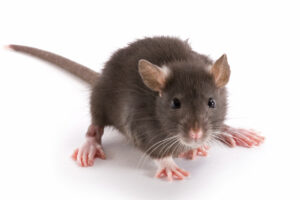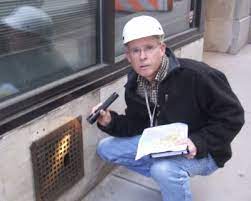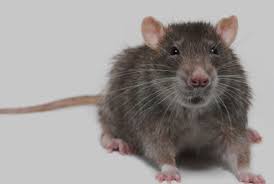Sprague’s Service Area Features an Array of Rodent Species
Did you know the docile looking house mouse urinates so frequently that it leaves up to 3,000 bacteria-laden microdroplets of urine on food products, raw materials and food processing surfaces and equipment each day? So much for the cuddly persona mice have cultivated.
Noted rodentologist Dr. Bobby Corrigan, B.C.E. recently visited with Sprague Pest Solutions for our Five Minutes blog on raising rodent awareness in commercial properties.

The most effective course of action is working with your pest management service provider to conduct a thorough rodent assessment.
What rodents do clients in Sprague’s service area need to be concerned about?
The diverse geographies that make up Sprague’s service area feature an array of rodent species. From Norway rats along the docks in Seattle and Portland to roof rats up and down the California coast, to house mice in Boise and Denver, and pack (trade) rats in Phoenix.
Corrigan said because of the diverse rodent population it’s possible that commercial properties could contend with multiple species competing for food, water and shelter.
“There is overlap among the species in certain areas and a commercial property could be contending with multiple rodent species,” said Corrigan. “They behave differently, eat different foods and increase risk as distinct species harbor different pathogens.”
The earlier example of the house mouse’s proclivity to leave behind urine droplets with millions of potential viruses on pallets, food products and surfaces, highlights the threat rodents pose, especially in food service, processing and distribution facilities.
Since rodents are known to reinfest each other’s nesting areas, Corrigan cautioned property managers and their pest management service providers not to assume it is the same species returning to their property.
Being Open to Change
Rodent populations are thriving according to Corrigan, but the way commercial clients are structuring their rodent management programs has not fully evolved.
“Many commercial properties are still using programs that are rooted in dated traditional baiting programs,” said Corrigan. “Simply servicing equipment (i.e., bait stations) at the expense of doing more inspections and assessments will leave a rodent management program wanting.”
Adjusting and updating your rodent management program will not only help you reach your end goal – preventing and eliminating rodents – but will improve the performance of your food safety programs.
“Rodent control, and pest control in general, is part of the food safety science process and commercial properties that embrace and pursue change, will end up ahead,” said Corrigan.
Assessment vs. Inspection
No matter how well designed or well-intentioned, rodent management programs are, they can fail. Corrigan said failure to invest the proper time up front to perform a comprehensive initial assessment often leads to poor results.
“Whether it is a small convenience store or a 500,000 sq. ft. food processing plant, conducting a thorough initial assessment is essential,” said Corrigan. “Too often this step gets skipped on the way to starting the service and trying to quickly solve the problem.”
Pest management professionals and clients need to work together on the assessment. It needs to consider all the factors that can contribute to rodent activity or allow them access including sanitation, maintenance and cleaning protocols, geographic location (who are your neighbors?), and employee training.
“Assessments are not a one-off and must be part of any ongoing rodent management program,” said Corrigan. “Clients need to demand that of their pest management partners.”
Corrigan said it is important to understand the difference between assessments and inspections.
In an inspection a technician is looking for signs of rodent presence including droppings, burrows, rub marks or damage. An assessment looks to answer the following questions:
- Where is the rodent pressure in specific areas of building? Is the building near a railroad siding, a pond or the open field next to the plant?
- Where do rodents rodent go if they gain access to the structure?
- Where are the undisturbed areas inside the plant that rodents prefer?
- Are there readily available food sources near interior or exterior walls?
- What are that operational restrictions for using baits at the facility?
“Assessments are where the qualitative questions are asked and answered,” said Corrigan. “You are looking for vulnerabilities that attract or give rodents access. It’s much deeper than a simple inspection.”
How can clients help themselves when it comes to rodent management practices? Corrigan said that in today’s food safety environment data and analytics play a key role in creating and executing a successful rodent management program.
“Clients should shadow their pest management service provider during the assessment and on the initial service visits, and ask questions,” said Corrigan. “Clients need to understand the service whys and why nots. They don’t have to be an expert, but they need to know what’s going on and use the data to their advantage.”
About Bobby Corrigan
 Dr. Bobby Corrigan has been active in the science of urban pest management for three decades. He serves a consultant to multiple government agencies and commercial clients on a national and international scale. He has appeared in Time Magazine; New Yorker Magazine; the CBS Sunday Monday Show, NPR, PBS, Discovery Channel and has blogged about city rats for the New York Times. A graduate of Purdue University, Corrigan lives in New York City.
Dr. Bobby Corrigan has been active in the science of urban pest management for three decades. He serves a consultant to multiple government agencies and commercial clients on a national and international scale. He has appeared in Time Magazine; New Yorker Magazine; the CBS Sunday Monday Show, NPR, PBS, Discovery Channel and has blogged about city rats for the New York Times. A graduate of Purdue University, Corrigan lives in New York City.
Discover The Sprague Difference
Looking for proven rodent management solutions from an innovative pest management partner? Connect with the rodent management experts at 800.272.4988.

